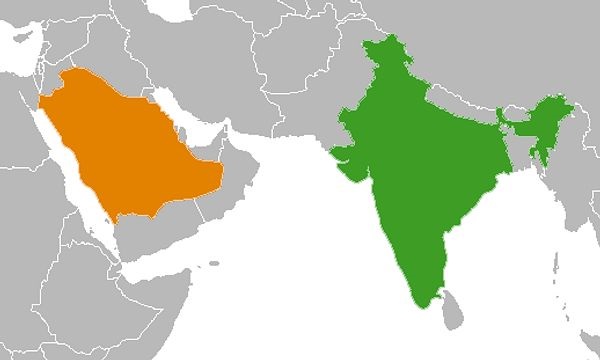
The digital India programme is a flagship programme of the government of India with a vision to transform India into a digital empowered society and knowledge economy;” faceless, cashless, paperless” is one of professed role of digital India. Digital payment is a way of payment which is made through digital modes. In digital payments, payer and payee both use digital modes to send and receive money, it is also called electronic payment, no hard cash is involved in the digital payments, all the transactions in digital payments are completed online, it is an instant and convenient way to make payments. Digital payment system is a way of making transactions or paying for goods and services through an electronic medium without use of cheque or cash. It is also called an electronic payment system or online payment system. The electronic payment system has grown increasingly over the last decades due to the widely spread of internet- based banking and shopping. As the world advance more on technology development, a lot of electronic payment systems and payment processing devices have been developed to increase, improve and provide secure e- payment transactions while decreasing the percentage of cheque and cash transaction.
Key words: Digital payment, credit cards, debits cards, cashless transaction.
INTRODUCTION
Electronic Payment System enables a customer to pay for the goods and services online by using integrated hardware and software systems. The main objectives of Electronic Payment System are to increase efficiency, improve, security and enhance customer convenience and ease of use. Although these systems are in their immaturity, some significant development has been made. There are several methods and tools that can be used to enable electronic payment system implementation. While customers pay for goods or services by cash, cheque or credit cards in conventional businesses. The speed of information processing and distribution increased the speed of trade and commerce. Computers and networks are creating a wider scope for electronic transactions and its payments. Electronic Payment transactions includes the following customer, issuer, merchant, acquirer bank, payment gateway, the processor and the types of digital or electronic payments are EFT, Debit Card, E- Cash, Credit Card, E-Wallet, Micro Payments, E- Cheque. So this study is an attempt has been made to know the popularity of Digital Payment System among the customers. As more businesses develop an online presence and open their products and services up for purchase on online platforms, we’ll continue seeing an increase in electronic payment systems, along with new types of payment processing portals and devices.
REVIEW OF LITERATURE
Black and Morgan (1998), in their study “Risk and democratisation of credit cards” found the dramatic rise in credit card charge- offs in the midst of a vigorous expansion suggest that bank cards borrowers have become inherently riskier. This paper investigates how the mix of credit card borrowers has changed in recent years, and how those changes affect delinquency risk.
Carow and Kenneth (1999), in the research paper “ Debit, Credit, or Cash: Survey evidence on Gasoline purchases” analyzed the consumer’s payment option to use debit, general purpose credit cards , gasoline credit cards, or cash. Based on the results from a nested multinomial logit model, author’s found consumer’s are more likely to use cash when they have less education, lower incomes, are middle-aged and own fewer credit cards. Debit and credit card users are younger, more educated and hold more credit cards. Respondents who use their Debit card are less likely to use their gasoline credit card. The result suggests that greater debit card usage will place the greatest competitive pressure on the gasoline credit card program.
Steindil (2000), in his study “Credit cards, Economization of money, and Interest Rates.” found the effect of interest rates on use of credit cards, which are increasingly used to finance consumption. The corollary is a reduction in money demand, which reduces the interest rates. Greater credit card usage increases the demand for credit, which raises the interest rate. Three models employing a credit market are used to resolve the problem.
Warwick and Mansfield (2000), in their study “Credit card consumer: college student’s knowledge and attitude” revealed that given the proliferation of the credit card industry in today’s US household, and the aggressive promotional tactics employed to get college students to sign on as customers. This exploratory study takes a look at the credit card activity of college students at Midwestern campus. The majority of students surveyed did not report knowledge of their credit card interest rate. Students appear to have a realistic attitude toward using credit cards, although not knowledgeable about the details of their card. This study raise the question of whether universities and business schools are doing a better job of preparing their students to be knowledgeable consumer’s in the market place or not.
Chakravorti (2003), in his study “ Theory of credit card networks: A survey of literature” showed that credit card provide benefits to customers and merchants not provided by other payment instruments as evidenced by their explosive growth in the number and value of transactions over the last 20 years. Recently, credit card networks have come under scrutiny from regulators and antitrust authorities around the world. The cost and benefits of credit cards to network participants are discussed. Focusing on interrelated bilateral transactions several theoretical models, have been constructed to study the implications of several business practices of credit cards networks.
Gupta (2003) in his research “Legal and regulatory framework of credit cards” asserted that the regulations of credit card business in India is diffused and need to be streamlined. Whereas in developed countries the law on credit card business in comprehensive and straight forward, its Indian version requires a structural change. Hence, there is a need to explore that various legislative premises of the inferior and unclear Indian version for protection of cardholders and healthy growth of the industry.
Bhargava (2004) in his paper tittled “Debit cards: A new generation plastic money” analysed that debit cards are fast catching up with the customers. A combination of factors like ease of availability, debit- adverse profile of customer and zero interest rates are propelling the usage of Debit Cards. The study emphasizes to increase the usage of these cards bank will need to improve infrastructure and continues to focus an increasing installations of point of sale (POS) in smaller cities and on the locations which are frequently used by cardholders, and to develop new marketing programmers that educate customers on the benefits of replacing cash with plastic.
tary and fiscal policies.
Anishabishr et al (2015), in their study “Analysis of the use of plastic money: A born or bane” highlighted that consumers are well aware of plastic money and usage. And they have been using plastic money for a long time. And majority of consumers mostly prefer to use plastic money over cash for their transaction and satisfied.
The Economic Times (November 10, 2016) discussed the issue of “India leads the world in Digital Transformation” –The government has been promoting digital transactions since November 8 when it announced demonization. Government is going to create digital transaction index. It will be based on three parameters- (1) total transactions in a state (proportion of cash and digital transactions), (2) the extent of penetration and (3) usage of different modes of digital payments.
Deepak Mathur(2018) found in his paper that Digital Payment is secure, there should be no threat to the user credit card numbers, smart card or other personal detail, Payment can be carried out without involvement of third party. The study reveals that the people are not so aware about the security concerns while making Digital Payments. There is a need to have awareness programs by the various agencies in this regard.
Rathore HS (2016) said in his paper that major factor in adoption of Digital Payment is convenience in buying products online without physically going from one location to another location. There has been many studies conducted in past on mobile payment application to find consumer interest and they found consumer has positive inclination for the same.
Bama Sak (2011) carried out study in Saudi Arabia found that there is a bright future for electronic payment. Security of mobile payment transactions and the unauthorized use of mobile phones to make a payment were found to be of great concerns to the mobile phone users. Security and privacy were the major concerns for the consumers which affect the adoption of Digital Payment solutions.
Shamsher Singh and Ravish Rana (2019) studied in their paper those demographic factors except education does not have much impact on the adoption of Digital Payment. It indicated that adoption of Digital Payment influenced by education level of the consumer.
STATEMENT OF THE PROBLEM
When we talk about the transactions in earlier times when there was no currency system, people used to work on Barter System, later on people started transaction in terms of currency notes and coins. In modern digital age people are using money in many forms to pay the bills like through credit card, debit card, using internet and mobile devices. In today’s era people are making transactions through Mobile devices, ATM, Credit Cards, Bit Coin, E-Wallet, third party like PayPal etc... They feel convenient, easy to use design for transaction and perceived usefulness of the system. This study is focusing upon the paperless e-currency transactions that are getting popular all over the world. India is a growing market for the world and many services and products are available online and they accept payments online, but how many people are actually relaying on it, and how many people are using it for making payments moreover. The major problem relating to Electronic Payment System is lack of knowledge about the use of Electronic Payment methods.
OBJECTIVES OF THE STUDY
• To understand the popularity of digital Payments/ paperless currency transactions among customers.
• To analyse the attitude towards paperless currency transactions.
• To study the risk factors related to the working of Digital Payment System.
• To find out the problems faced by users under Digital Payment System.
• To understand the awareness of Digital Payment System among customers.
SIGNIFICANCE OF THE STUDY
Paperless currency transactions is the new mantra in India, Digital Payment is one of the fast growing payment system in the world, which helps to quick cash transactions. Nowadays people are moving to the digital payment system, it is observed that the last two decade the use of digital payment increased the speed of internet and data processing help the people to access many internet facilities available. Moreover the world is moving into digital and cashless economy, so the growing generation should be aware about the digital payment.
SCOPE OF THES TUDY
Digital Payment System is increasingly becoming a daring means of payment in today’s business world, this due to its convenience and timelines. This study is conducted to know the perception of digital payment system. 100 customers are selected from Perinthalmanna Municipality.
RESEARCH METHODOLOGY
Research methodology is a systematic way of solving research problems. The adoption of proper methodology is an essential step in conducting any research study.
• Sampling unit
The sampling unit of the study consisted of the perception of Digital Payment System among consumers in Malappuram district
• Sampling size
The sampling size of the study consisted of 100 customers in Malappuram district
• Sampling technique
The study consists of people belonging to different age group and financial position. Convenient sampling technique is used for selecting samples.
DATA COLLECTION
Sources of data
For the study data were collected from both primary and secondary sources.
• Primary data
The primary data were collected with the help of questionnaire from the customers in Malappuram District
• Secondary data
The secondary data were collected from the books, journals and websites.
TOOLS FOR DATA ANALYSIS
1. Percentage analysis
2. Charts
3. Weighted Average
4. Chi-square Test
HYPOTHESIS
• H0: There is no significant relationship between gender and satisfaction level of customers regarding the security measures adopted by digital payment system.
• H1: There is significant relationship between gender and satisfaction level of customers regarding the security measures adopted by digital payment system.
RESULT AND DISCUSSION
THE AWARENESS OF DIGITAL PAYMENT TRANSACTIONS
PARTICULARS NUMBER OF RESPONDENTS PERCENTAGE
Not at all aware 1 1
Slightly aware 5 5
Moderately aware 63 63
Very aware 25 25
Extremely aware 6 6
TOTAL 100 100
INTERPRETATION: From the table it is clear that 63% of the respondents are moderately aware of Digital Payment System, and 25% of the respondents are very aware of Digital Payment System, and 5% of the respondents are slightly aware of Digital Payment System, only 1% of the respondents are not at all aware of Digital Payment System.
TABLE SHOWS THE SOURCE OF INFORMATION REGARDING DIGITAL PAYMENTS.
SOURCE NUMBER OF RESPONDENTS PERCENTAGE
Books 69 69
Websites 4 4
Friends and family 15 15
News and journal 10 10
Others 2 2
TOTAL 100 100
INTERPRETATION: From the survey it was found that amongst 100 respondents major source of regarding Digital Payment is through books, some of the respondents are getting information through websites, 15% of the respondents are getting information through friends and family and some respondents are getting from other sources.
TABLE SHOWS THE SUITABILITY OF DIGITAL PAYMENT SYSTEM.
TYPES OF PAYMENTS NUMBER OF RESPONDENTS PERCENTAGE
Debit Card 60 60
Credit Card 30 30
Smart Card 9 9
E-Wallet 1 1
E-Cheque 0 0
E-Cash 0 0
Others 0 0
TOTAL 100 100
INTERPRETATION: From the survey it was found that amongst 100 respondents, most suitable is credit card for customers and many of the respondents are using debit card also, the number of respondents that are using E-wallet is very low
TABLE SHOWS THE FACTORS CONSIDERING WHILE CHOOSING DIGITAL PAYMENT SYSTEM.
FACTORS RANK 1 RANK 2 RANK 3 RANK 4 RANK 5 Total
Safety 60 20 9 7 4 100
Privacy 20 55 15 5 0 100
Speed 10 5 85 0 0 100
Low service cost 0 0 0 30 70 100
Marketing support 0 0 15 80 5 100
WEIGHTED SUM OF EACH FACTOR
FACTORS RANK 1 RANK 2 RANK 3 RANK 4 RANK 5 TOTAL MEAN RANK
SAFETY 300 80 27 14 4 425 4.25 1
PRIVACY 100 220 45 20 0 385 3.85 2
SPEED 50 20 255 0 0 325 3.25 3
LOW SERVICE COST 0 0 0 60 70 130 1.30 5
MARKETING SUPPORT 0 0 45 160 5 210 2.10 4
INTERPRETATION: Out of 100 respondents, all of them have an opinion that Safety is the factor which promotes most to use the Digital payment system.Privacy is the second factor and so on
THE DEGREE OF AWARENESS ABOUT RISK IN DIGITAL PAYMENT TRANSACTIONS
PARTICULARS NUMBER OF RESPONDENTS PERCENTAGE
Not at all aware 3 3
Slightly aware 40 40
Moderately aware 55 55
Very aware 2 2
Extremely aware 0 0
TOTAL 100 100
INTERPRETATION: The above table and chart shows that only few respondents are not at all aware of the risk related with Digital Payments, many of the respondents are moderately aware of the risk related with Digital Payment and none of the respondents are extremely aware of the risks related with Digital Payment.
PROBLEMS NUMBER OF RESPONDENTS PERCENTAGE
Lack of security 60 60
Costly 20 20
Lack of knowledge 17 17
Time consuming 1 1
Lack of user friendliness 2 2
TOTAL 100 100
INTERPRETATION: From the above table and chart it is clear that, 60% of customers face the problem of lack of security, 20% costly, 17% lack of knowledge, 2% faces lack of user friendliness and only 1% face time consuming.
TABLE SHOWS THE FUTURE OF DIGITAL PAYMENT SYSTEM
SCOPE NUMBER OF RESPONDENTS PERCENTAGE
It may completely decline 1 1
Slightly exist 30 30
Strongly exist 68 68
Only it will exist 1 1
TOTAL 100 100
INTERPRETATION: From the survey it is clear that amongst 100 respondents, all respondents believe that Digital Payment System may not completely decline in future. Many of the respondent’s agree that it will strongly exist in future.
TABLE SHOWS THE CUSTOMERS RECOMMENDATION OF DIGITAL PAYMENT SYSTEM TO THEIR FAMILY AND FRIENDS.
PARTICULARS NUMBER OF RESPONDENTS PERCENTAGE
RECOMMENDING 80 80
NON RECOMMENDING 20 20
TOTAL 100 100
INTERPRETATION: From the survey it was found that amongst 100 respondents, many of the respondents recommend Digital Payment System to their family and friends.
CHI-SQUARE TEST
Test whether there is any significant relationship between gender and satisfaction level or customers regarding the security measures adopted by digital payment system.
TEST PROCEDURE
H0: There is no significant relationship between gender and satisfaction level of customers regarding the security measures adopted by digital payment system.
H1. There is significant relationship between gender and satisfaction level of customers regarding the security measures adopted by digital Payment system.
GENDER SATISFIED NOT SATISFIED TOTAL
MALE 12 20 32
FEMALE 21 47 68
TOTAL 33 67 100
COMPUTATION OF CALCULATED VALUE
OBSERVED VALUE(O) EXPECTED VALUE (E) O-E (O-E)2 (O-E)2/E
12 10.56 1.44 2.0736 0.19
20 21.44 -1.44 2.0736 0.09
21 22.44 -1.44 2.0736 0.092
47 45.56 1.44 2.0736 0.05
TOTAL 0.422
Calculated value =0.422
Degree of freedom =(r-1) (c-1)
=(2-1) (2-1)=1
r= no of rows
c=no of columns
Table value @5% significance level=3.81
Here calculated value is less than (0.422) the table value (3.81), so we accept the null hypothesis. So gender and satisfaction level of customers regarding the security measures adopted by digital payment system are not significant.
FINDINGS
• Many of the respondents agree that E-currency transactions have now grown as a status in society.
• Majority of the respondents are having bank account.
• Majority of the respondents are directly purchasing from market.
• Many of the respondents are getting information about Digital Payment through books.
• From the study conducted we found that 50% respondents are following credit card for their purchases, 40% are following debit card, 5% are using smart card and 5% follows E- wallet, and none of the customers are using e- cash, e- cheque and other Payment methods.
• Majority of the respondents are making less than 5 transactions through Digital Payment System in a month.
• Most of the customers opinion that cashless transactions are more convenient for daily uses.
• Majority of the respondents are moderately aware about the risk related with Digital Payment System.
• Most of the respondents are not fully satisfied with the security measures of Digital Payment System.
• Majority of the respondents think that lack of security is the major problem in Digital Payment System.
• Majority of customers are considering safety factor while choosing Digital Payment System.
• Most of the respondents are recommending Digital Payment to their friends and family.
• 80% of the respondents are satisfied about paperless currency transactions. 1% is highly dissatisfied and about 11% shows neutral view.
• Majority of the respondents think that transactions are accurate after the adoption of Digital Payment System.
• 50% of the respondents have high comfort level with Digital Payment System.
• Many of the respondents are willing to adopt Digital System.
• 60% of the respondent’s opinion that security of the application is the major problem for the adoption of Digital Payment System.
• Most of the respondents strongly agree that cashless transactions are more convenient than cash transactions for daily transaction.
• Majority of the respondent’s opinion that Digital Payment System will strongly exist in future.
SUGGESTIONS
• Better to improve the security measures adopted by Digital Payment System.
• Government should try to provide awareness about risks related to E- Currency transaction modes.
• The Digital Payment System should ensure the user friendlines to their customers.
• Protect the privacy of customers in each transaction.
• Government should try to provide awareness about different modes of Digital Payments to customers.
• Giving guidance to customers regarding the adoption of Digital Payment System.
• Take necessary steps to avoid fraud in E- Payments.
• Create awareness about various frauds in Electronic Payments.
• Protecting the consumer interest.
• Motivate people to use online payments.
• Marketing and promotion programme should be conducted to create awareness among non- users.
• Discount offers and reward points on making Digital Payment can increase its popularity and adoption level.
CONCLUSION
In India there are lots of changes in environment; “ change” is the only truth in this world. It is advisable to accept and adapt according to it for survival. Modern financial system has gone through many changes in terms of payment processing system from traditional banking system to ATM or Debit Card, Credit Card online payment, wire transfer, NEFT, RTGS etc... Digital Payment System is increasingly becoming a daring means of payments in today’s world, this due to its convenience and timelines, consumer acceptance of all the technological changes has been vital to the success of emerging rental payments and products, This study is an effort to explore the awareness of this new payment system, It can be conclude that many of the customers are aware about the Digital Payment System , so we can say that Digital Payments revolution has well and truly started, but a little transactions are take place due to lack of trust, habit, transparency, pervasiveness of cash and friction, However everyone think that the Digital Payment System will strongly exist in future.
REFERENCES
1. L.M. Bhole, FINANCIAL INSTITUTIONS AND MARKETS, Tata MCgraw- Hill Education, 2009
2. C.R.Kothari, RESEARCH METHODOLOGY, New Age International (P) Limited, 2013
3. E-commerce Management- DR. Abdul.Assis Koroth.
4. Dezan Shira and Associates (2017) Growth of Digital Payment System in India.
5. Hashim khan, " Cashless" transactions: Perception of money in mobile payments.
6. Deepak Mathur, A survey of awareness about security in E- Payment system.
7. Premchand.A, and ChoudhryA.T(2015). Future of Payments- e- payments. International- Journal of Emerging technology and Advanced Engineering, 5,110-115
8. Journal of Internet Banking and Commerce,Dec 2017, Vol 22.
9. Rathore HS(2016) Adoption of Digital Wallet by consumers. BVIMSR's Journal of Management Research 8:69.
10. , D. (2001). A Survey of user attitudes towards Electronic Payment Systems. The 15th Annual Conference of the Human Computer Interaction Group of the British, Computer Society. Toulouse, France: Cepadues - Editions. IHM-HCI-2001. vol. 2., pp. 69-71.
11. Anyanwu, Akudo Chidinma,2012, Design and implementation of a flexible multi-currency Electronic payment system, Ahmadu Bello University, Zaria, p-35
12. ] Asokan,N, Janson, P., Steiner, M. and Weidner, M. (2000), Electronic Payment Systems IBM Research Division, Zurich Research Laboratory p1-16
13. B. Suh and I. Han, Effect of trust on customer acceptance of Internet banking, Electronic Commerce Research and Applications, vol.1, no.3, pp.247-263, 2002.
14. Mantel & Timothy McHugh, 2001. "Competition and innovation in the consumer e-payments market? considering the demand, supply, and public policy issues," Occasional Paper; Emerging Payments EPS-2001-4, Federal Reserve Bank of Chicago.
15. Bruno-britz, Bank Systems and Technology, International Magazine, 2006
16. Caroline and Graham (2005), Report Ref. No DSTI/ICCP/IE(2004)18/REV1, OECD Secretariat.




